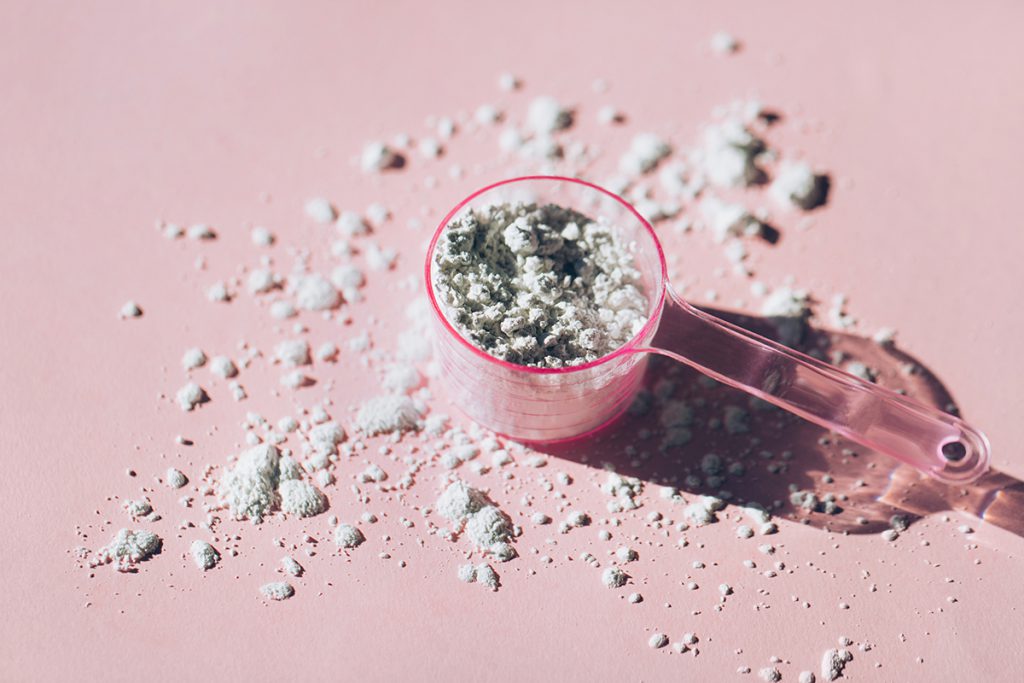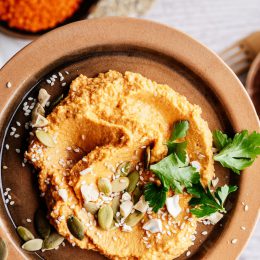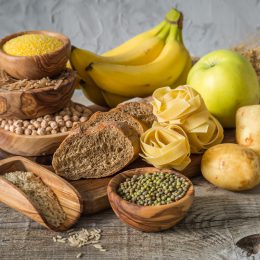Should You Use a Protein Powder?
A registered dietitian gives the inside scoop on one of the most popular diet supplements.

Scoop, blend and drink — protein powder is a convenient and cost-effective way to meet protein needs. This is largely why they have become one of the most popular supplements on the market.
And if you’re looking for ways to eat more protein, consider this: Several studies suggest that protein powders can help older adults build and maintain muscle mass, which is a key factor in healthier aging by reducing frailty and lowering injury risk. This is especially true when the supplement is paired with some form of resistance training. It’s not always easy to get enough protein from your regular meals, so a powder can be a useful way to bridge that protein gap.
While these powders may seem like an easy fix for a low-protein diet, there are a few things to consider before you try one.
Healthy eating and fitness go together! SilverSneakers classes and events are happening right now at participating gyms, online through SilverSneakers LIVE, and at community centers near you. Activate your free online account to get started.
Protein Powders Won’t Replace Whole Foods
The macronutrient plays a vital role in promoting muscle growth, supporting the immune system, improving bone strength, and more.
The Recommended Daily Allowance is 54 grams of protein for a 150-pound adult. (The formula is 0.36 gram per pound of body weight.) For optimal health, though, many health and nutrition experts encourage older adults to eat 25 to 30 grams of protein per meal, along with 10 to 15 grams per snack.
Why so much? As you age, your body doesn’t metabolize protein as efficiently as it did when you were younger. Plus, certain medical conditions that are more common among seniors (like inflammation) hike protein needs. If you follow a vegan or vegetarian eating style, it can also be harder to prepare enough high-protein meals and snacks to hit your daily goals.
Powders are never going to replace whole foods, but they are a good way to help fill the gaps. Different protein powder brands have varying levels of protein.
In general, each scoop has 20 to 28 grams of protein. In comparison, a 4-ounce serving of chicken breast has about 25 grams of protein, while 2 large eggs contain 12 grams.
Recommended FREE SilverSneakers On-Demand Class: Healthy Diet Basics for Seniors
There Are More Options Than Ever
With superb protein quality, whey protein has long been the gold standard for protein powders. (Whey is the liquid left over after milk has been curdled and strained.)
But new evidence suggests that plant-based protein powders can be just as effective at helping build lean body mass. These days, protein powder manufacturers use protein that comes from a wide range of different sources, including:
- Eggs
- Chia
- Hemp
- Milk (the source of whey and casein protein)
- Pea
- Pumpkin seeds
- Rice
- Soy
This is good news for people with certain dietary preferences, like vegans, as well as people with allergies to traditional protein sources like milk or soy. Research suggests as long as you are meeting your daily protein requirements, it does not matter much whether you get it from plants or animals.
Some powders can include protein from more than one source. For instance, some plant-based options may have pea, rice and chia protein all in one.
Testing Can Be Lax
Protein powders are not regulated by the U.S. Food and Drug Administration (FDA) because they are considered dietary supplements, not food. Essentially, this means you have to trust that the product you buy contains what the label says it does.
Some brands seek out an independent third-party organization to test their product for safety and purity. This information that can be found on the brand website. It’s important to do a bit of research and pick a protein powder that’s from a trusted brand.
Beware Add-Ins
Some protein powders are more than just protein. You can now find powders that include added vitamins, minerals, dried greens like spinach, prebiotics and probiotics. These ingredients can be helpful additions depending on your nutrition needs, but they can bump up the cost of the product.
Some protein powders also contain added sugar. Look for options with no more than 3 to 5 grams of added sugar in a scoop. You may want to find one that is sweetened instead with a low- or zero-sugar sweetener, like stevia and monk fruit extract, instead of sugar or an artificial sweetener such as sucralose.
You May Need to Try A Few
You may need to test out different powders to find one with the flavor, texture, and results you prefer.
For instance, some plant protein powders can be grittier than dairy-derived powders. And some individuals may develop gas or nausea when using a certain powder. Keep trying different brands until you find an option that better agrees with you.
They’re Good for More Than Smoothies
Blending powders into smoothies is an easy (and tasty!) way to use them. But you can use them to boost protein levels in other foods, too.
Stir a scoop of powder into oatmeal or a bowl of yogurt. Substitute protein powder for some flour in a muffin recipe. A plain flavored powder can even be used in dips like hummus. Consider it a versatile ingredient you can use in the kitchen on a regular basis.
They Don’t Last Forever
Like any food item, protein powders don’t have an infinite shelf-life. It’s not so much that the dietary supplement becomes unhealthy to use past its expiration date or “best by” date, but the quality of the product degrades over time, including its nutrition and flavor.
Subscribe to our newsletter
It's quick and easy. You could be one of the 13 million people who are eligible.
Already a member? Click to discover our 15,000+ participating locations.
Follow Us
Expiration and best-before dates are decided by the maker of the product, but in general, most products have dates that are set one year from their production and packaging date. Milk protein powders like whey protein may not last as long as plant-derived proteins.
Don’t Rely on Them Too Heavily
These powders are a convenient way to get more protein in your diet, but most of the protein you eat should still come from eating foods like meats, legumes and dairy.
Whole foods provide a nutritional matrix that can’t be recreated by a powder. For instance, plant-based protein powders typically contain less fiber, antioxidants, and micronutrients than the plants they hail from.
Pea protein powder, for example, is not the nutritional equivalent of whole peas. And whey protein lacks the calcium and vitamin D in milk or the probiotics from yogurt.
It’s important to consider them a supplement and not a primary source of protein.
The Bottom Line
It’s important to consume enough protein for good health, and certainly protein powders can be a helpful way to get what you need.
But if your diet already contains plenty of protein-rich foods, supplementing with a protein powder is not a must.
See our sources:
Study on whey protein’s effects in older women: Nutrients
Study on using whey protein to treat muscle loss: Nutrients
Link between protein sources and muscle health in older adults: Nutrients
Check Your SilverSneakers Eligibility Instantly
SilverSneakers members can go to thousands of nationwide gyms and fitness locations, plus take SilverSneakers LIVE online classes that are designed for all fitness levels and abilities. If you have a Medicare Advantage plan, it may include SilverSneakers — at no additional cost. Check your eligibility instantly here.
Already a member? Get your SilverSneakers member ID and exclusive fitness and wellness content by activating your online account here.
Not eligible for SilverSneakers? You can still get 200+ free SilverSneakers On-Demand videos and stay in touch with us by creating your online account.





